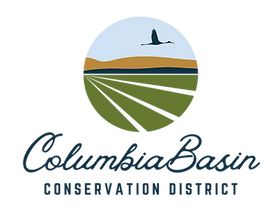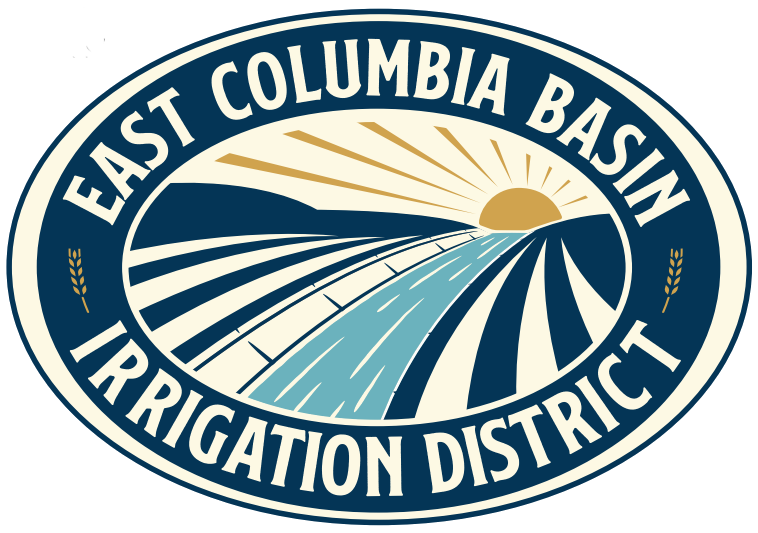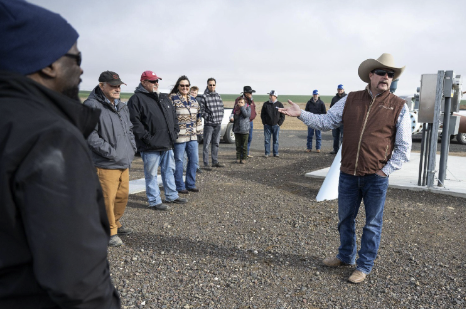

Astor Boozer, USDA-Natural Resources Conservation Service (NRCS)
regional conservationist for the West Region; Roylene Comes At Night, Washington state
conservationist; and other NRCS staff toured the Odessa Groundwater Replacement Program
(OGWRP) with OGWRP partners earlier this month. The half-day event was coordinated by the
Columbia Basin Conservation District (CBCD).
State Senators Schoesler and Warnick, Representatives Dent and Dye, Washington State
Department of Agriculture Director Derek Sandison, and representatives from the U.S. Bureau
of Reclamation (Reclamation), East Columbia Basin Irrigation District, Columbia Basin
Development League, and OGWRP landowners joined CBCD in welcoming NRCS leadership to
the OGWRP. The delegation shared progress to date regarding the Odessa Aquifer rescue
mission and expressed their appreciation for NRCS’s support of this critical effort.
“Having NRCS national leadership tour the OGWRP reflects the priority that the agency has put on this project. NRCS is proving to be a fully engaged partner working at all levels to develop and implement a watershed plan that will accelerate the transition of deep well irrigators off of the aquifer and onto the Columbia Basin Project through the OGWRP,” stated Harold Crose, CBCD resource conservationist.
NRCS has a mission to “deliver conservation solutions so agriculture producers can protect natural resources and feed a growing world.” Among milestones in the work to rescue the Odessa Aquifer, ECBID was awarded NRCS Small Watershed Program funding for development of an NRCS-required OGWRP Watershed Plan in order to access additional NRCS funding for pump station and lateral design and construction. The CBCD will provide oversight of the watershed plan creation for ECBID. The Small Watershed Program, referred to as PL-566, requires the development of technically, environmentally, socially, and economically sound watershed project plans with actions scheduled for implementation over a specified period of years. Watershed project plans contain project actions, which are formally planned undertakings carried out within a specified geographic area by sponsors for the benefit of the general public.
“Having NRCS national leadership tour the OGWRP reflects the priority that the agency has put on this project. NRCS is proving to be a fully engaged partner working at all levels to develop and implement a watershed plan that will accelerate the transition of deep well irrigators off of the aquifer and onto the Columbia Basin Project through the OGWRP,” stated Harold Crose, CBCD resource conservationist.
NRCS has a mission to “deliver conservation solutions so agriculture producers can protect natural resources and feed a growing world.” Among milestones in the work to rescue the Odessa Aquifer, ECBID was awarded NRCS Small Watershed Program funding for development of an NRCS-required OGWRP Watershed Plan in order to access additional NRCS funding for pump station and lateral design and construction. The CBCD will provide oversight of the watershed plan creation for ECBID. The Small Watershed Program, referred to as PL-566, requires the development of technically, environmentally, socially, and economically sound watershed project plans with actions scheduled for implementation over a specified period of years. Watershed project plans contain project actions, which are formally planned undertakings carried out within a specified geographic area by sponsors for the benefit of the general public.
Reclamation, Department of Ecology’s Office of Columbia River, and ECBID have worked
together on the OGWRP since 2005.
Operating within Reclamation programmatic requirements,
the partners completed an environmental impact statement, feasibility analysis, engineering
studies and cost estimates. The NRCS Small Watershed Program has its own unique set of
planning and funding criteria that must be completed to determine the eligibility of the OGWRP
for additional Small Watershed Program funding. Thankfully, a significant portion of the work
already accomplished will meet the criteria of the Small Watershed Plan process so
development of the OGWRP watershed plan can be expedited.
“NRCS represents a new funding avenue for OGWRP and hope for hundreds of thousands of individuals in the Columbia Basin. We are enthused by the potential represented in a partnership with NRCS,” said Sara Higgins, CBDL Executive Director.
The Columbia Basin Project (CBP) is the water source for thousands of farmers and some municipalities and industrial stakeholders. While waiting for continued development of the CBP, decades ago, the Department of Ecology issued farmers temporary permits to use ground water to irrigate over 100,000 acres. The non-renewable Odessa aquifer declined and now threatens water availability for over 180,000 people and over a dozen rural communities including Lind, Odessa, Connell, Othello, Warden, Hatton, Wilson Creek, Moses Lake, and others. Multiple partners are working together to rescue the declining aquifer and preserve it for environmental and domestic water supply purposes.
“NRCS represents a new funding avenue for OGWRP and hope for hundreds of thousands of individuals in the Columbia Basin. We are enthused by the potential represented in a partnership with NRCS,” said Sara Higgins, CBDL Executive Director.
The Columbia Basin Project (CBP) is the water source for thousands of farmers and some municipalities and industrial stakeholders. While waiting for continued development of the CBP, decades ago, the Department of Ecology issued farmers temporary permits to use ground water to irrigate over 100,000 acres. The non-renewable Odessa aquifer declined and now threatens water availability for over 180,000 people and over a dozen rural communities including Lind, Odessa, Connell, Othello, Warden, Hatton, Wilson Creek, Moses Lake, and others. Multiple partners are working together to rescue the declining aquifer and preserve it for environmental and domestic water supply purposes.
The Columbia Basin Conservation District (CBCD) is a consolidation of several conservation
districts that have served Grant County and the irrigated portions of Adams County since 1945.
CBCD provides technical and financial assistance to help implement voluntary practices that
conserve our natural resources. Like other conservation districts across the county, CBCD has
a unique and close working relationship with NRCS. Together, they are able to leverage
resources and increase on-the-ground conservation.
Since 1964, the Columbia Basin Development League has supported the Bureau of Reclamation’s Columbia Basin Project and its future development. The League is working toward a fully developed Columbia Basin Project that supports a robust regional and state economy and quality of life through efficient, well-maintained, affordable infrastructure and sustainable environmental stewardship.
Located in central Washington State, the East Columbia Basin Irrigation District is the largest district in the state, with authorization to irrigate 472,000 acres. Currently, 169,000 acres are developed and managed by 4,500 landowners within the federal Columbia Basin Project. Additionally, the District is involved in the development of 87,000 acres associated with the Odessa Groundwater Replacement Program (OGWRP). The District provides a reliable supply of water that irrigates the cropland that produces food shipped domestically and internationally.
Since 1964, the Columbia Basin Development League has supported the Bureau of Reclamation’s Columbia Basin Project and its future development. The League is working toward a fully developed Columbia Basin Project that supports a robust regional and state economy and quality of life through efficient, well-maintained, affordable infrastructure and sustainable environmental stewardship.
Located in central Washington State, the East Columbia Basin Irrigation District is the largest district in the state, with authorization to irrigate 472,000 acres. Currently, 169,000 acres are developed and managed by 4,500 landowners within the federal Columbia Basin Project. Additionally, the District is involved in the development of 87,000 acres associated with the Odessa Groundwater Replacement Program (OGWRP). The District provides a reliable supply of water that irrigates the cropland that produces food shipped domestically and internationally.


